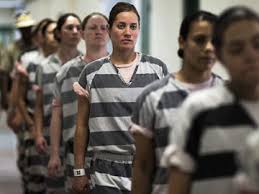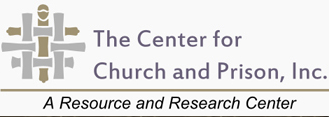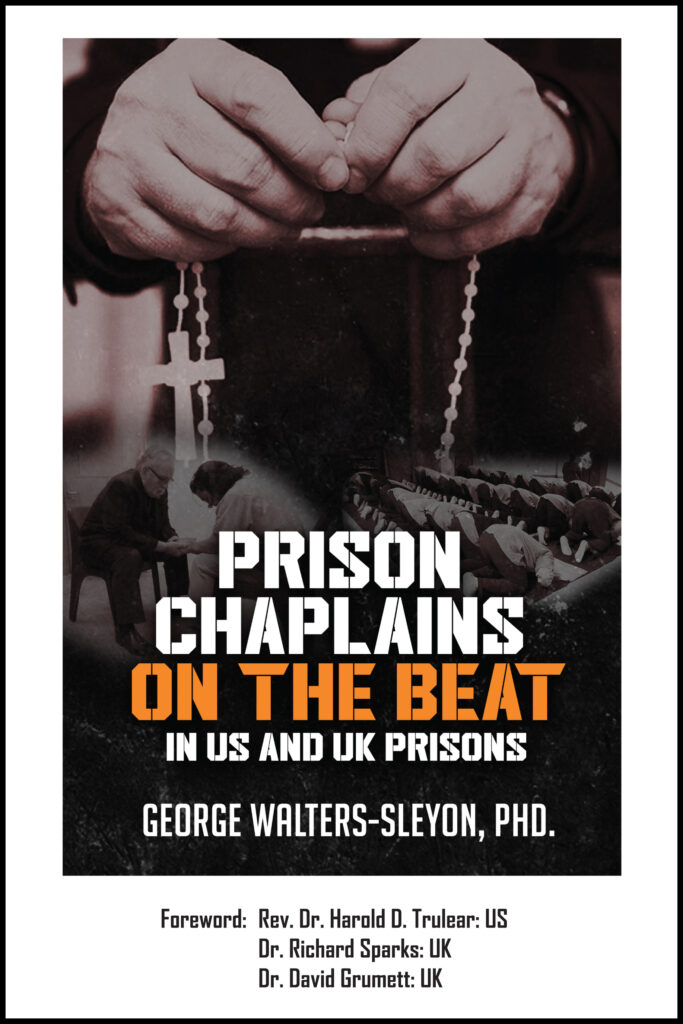Women
 Women
Women
Inside the COVID unit at the world’s largest women’s prison
PBS News Hour: Oct 19, 2020 2:10 PM EST
Kandice Ortega cleaned the tables and phones in building 503 with a sanitary pad. There were no fresh rags, but she didn’t want to live in filth — cleanliness had taken on a new, pressing importance. Like many, Ortega worried about getting COVID-19. But unlike much of the country, Ortega had few options to limit her exposure. She is incarcerated at the Central California Women’s Facility (CCWF), the largest women’s prison in the world. When CCWF officials began to limit activities and movement to safeguard against the coronavirus, building 503 was turned into a quarantine unit with 100 beds for isolation. Ortega was moved to 503 after her roommate tested positive for COVID in mid-July.
First of its Kind Statistics on Pregnant Women in U.S. Prisons
Forgotten Victims: Women and COVID-19 Behind Bars COVID-19 and the policies designed to counter it in American prisons pose distinct medical, emotional, psychological and economic threats for incarcerated women and their families. Less than one year into the COVID-19 pandemic, many questions remain unanswered about the virus, but already glaringly apparent are some factors that increase risk. One is the vulnerability that exists for people who are incarcerated; infection rates in prisons are 5.5 times higher than among the general American public.1 The high rates in prisons are likely a result of both housing conditions and the statistically higher rates of co-morbidities among the incarcerated population.2
- Women’s Mass Incarceration: The Whole Pie 2017 Prison Policy Initiative, October, 2017“This report provides a first-of-its-kind detailed view of the 219,000 women incarcerated in the United States, and how they fit into the even larger picture of correctional control.”
- Reflections on New National Data on LGBQ/GNCT Youth in the Justice System Harvard Kennedy School, September, 2017(12-13% of boys in the justice system identify as gay, bisexual, questioning, gender nonconforming, or transgender (GBQ/GNCT), while 40% of girls identify as LBQ/GNCT. And, of these LGBQ/GNCT youth, 85% nationally are of color.)
- The Status of Black Women in the United States Institute for Women’s Policy Research, June, 2017“The intention behind this report is to make visible the experiences of Black women in our economy and our democracy.”
- Girlhood Interrupted: The Erasure of Black Girls’ Childhood Georgetown Law Center on Poverty and Inequality, June, 2017(Adults view black girls as less innocent and more adult-like than their white peers, especially in the age range of 5-14)
- Gender and Trauma, Somatic Interventions for Girls in Juvenile Justice: Implications for Policy and Practice Rebecca Epstein and Thalia González, Georgetown Law Center on Poverty and Inequality, April, 2017“Trauma-informed, gender-responsive, and culturally competent somatic interventions can serve as a critical component of physical and mental health approaches for system-involved girls.”
- Overlooked: Women and Jails in an Era of Reform Vera Institute of Justice, August, 2016“At this critical moment in jail and local justice system reform, Vera has taken stock of the existing research on women in jail to begin to reframe the conversation to include them.”
- The Gavel Gap: Who Sits in Judgment on State Courts? American Constitution Society for Law and Policy, June, 2016“We find that courts are not representative of the people whom they serve — that is, a gap exists between the bench and the citizens.”
- Breaking Promises: Violations of the Massachusetts Pregnancy Standards & Anti-Shackling Law The Prison Birth Project and Prisoners’ Legal Services of Massachusetts, May, 2016“Far too often Massachusetts prisons and jails violate the law in both policy and practice, undermining the public will and subjecting pregnant women to illegal, unsafe, and degrading treatment.”
- “Do You See How Much I’m Suffering Here?” Abuse against Transgender Women in US Immigration Detention Human Rights Watch, March, 2016“[T]his report details the abuses that transgender women suffer in immigration detention and the US government’s inadequate efforts to address them.”
- California Sentencing Institute Map California Sentencing Institute, March, 2016“Explore the interactive map to view population-adjusted rates of adult and juvenile arrests and incarcerations.”
- Pretrial Incarcerated Women: An Analysis of Women in Bristol County Jail, Massachusetts Wellesley Centers for Women, March, 2016“This brief policy report examines these women’s demographic and criminal justice characteristics and, focusing particularly on their race and ethnicity, examines the relationships between them.”
- Health Disparities in Drug- and Alcohol-Use Disorders: A 12-Year Longitudinal Study of Youths After Detention American Journal of Public Health, December, 2015“Drug abuse appears to have greater consequences for racial/ethnic minorities, especially African Americans, than for non-Hispanic Whites.”
- The Conditioning Effects of Race and Gender on the Court Outcomes of Delinquent and Justice Quarterly, November, 2015(The main inverse effect for status, probation violation, contempt, misdemeanor property, felony property, felony person, drugs, and other offenses with detention, was conditioned by whether the youth was Black.)
- States of Women’s Incarceration: The Global Context Prison Policy Initiative, November, 2015“When compared to jurisdictions across the globe, even the U.S. states with the lowest levels of incarceration are far out of line.”
- Hate Crime Statistics, 2014 Federal Bureau of Investigation, November, 2015“Of the 5,462 single-bias incidents reported in 2014, 47 percent were racially motivated. Other motivators included sexual orientation, religion, ethnicity, gender identity, disability, and gender.”
- World Female Imprisonment List: Third Edition World Prison Brief; Institute for Criminal Policy Research, September, 2015“This report shows that 700,000 women and girls are held in penal institutions throughout the world, either as pre-trial detainees/remand prisoners or having been convicted and sentenced.”
- Gender Injustice: System-Level Juvenile Justice Reforms for Girls The National Crittenton Foundation; National Women’s Law Center, September, 2015“Despite decades of attention, the proportion of girls in the juvenile justice system has increased and their challenges have remained remarkably consistent, resulting in deeply rooted systemic gender injustice.”
- Breaking the Silence: Civil and Human Rights Violations Resulting from Medical Neglect and Abuse of Women of Color in Los Angeles County Jails Dignity and Power Now, August, 2015“This Report by Dignity and Power Now (“DPN”) documents how jail and prison officials violated the rights of seven women of color, and highlights the mental health consequences of the medical neglect and abuse these women suffered.”
- Moving Beyond Incarceration for Women in Massachusetts: The Necessity of Bail/Pretrial Reform Wellesley Centers for Women, March, 2015“Between 2012 and 2014, the number of pretrial women held in the Awaiting Trial Unit (ATU) at MCI-F increased, and overcrowding worsened.”
- Reproductive Injustice: The State of Reproductive Health Care for Women in New York State Prisons Correctional Association of New York, February, 2015“Overall, however, we found that reproductive health care for women in New York State prisons is woefully substandard, with women routinely facing poor-quality care and assaults on their basic human dignity and reproductive rights.”
- “If They Hand You a Paper, You Sign It”: A Call to End the Sterilization of Women in Prison Rachel Roth and Sara L. Ainsworth, Hastings Women’s Law Journal, January, 2015“[A] number of states allow the sterilization of incarcerated women—flouting important policy norms—and that medical providers and their professional organizations play key roles in sanctioning and carrying out these procedures.”
- The Sexual Abuse to Prison Pipeline: The Girls’ Story Human Rights Project for Girls; Georgetown Law Center on Poverty and Inequality; Ms. Foundation for Women, 2015“And in a perverse twist of justice, many girls who experience sexual abuse are routed into the juvenile justice system because of their victimization.”
- Women Injustice: Gender and the Pathway to Jail in New York City John Jay College of Criminal Justice, Prisoner Reentry Institute, 2015“Only 12% to 15% of the average daily population of women at Rikers have been sentenced to jail, as most are detained on pending cases.”
- Black Girls Matter: Pushed Out, Overpoliced, and Underprotected African American Policy Forum, December, 2014“Increased levels of law enforcement and security personnel within schools sometimes make girls feel less safe and less likely to attend school.”
- Bias Behind Bars: Decreasing Disproportionate Rates of Incarcerated Women in California and Nationwide for Low-Level Offenses The Women’s Foundation of California, October, 2014“Nationally-but especially in California-women have been incarcerated for nonviolent, poverty-related offenses at disproportionate rates compared to men.”
- Worse Than Second-Class: Solitary Confinement of Women in the United States American Civil Liberties Union, April, 2014“…solitary is often used on the most vulnerable: pregnant women, individuals with mental illness, transgender women, and – in a particularly disturbing trend – victims of sexual assault by prison guards.”
- No More Shackles A report on… California’s counties under the new law that limits the use of restraints on pregnant prisoners Legal Services for Prisoners with Children, February, 2014“…specification that a prisoner known to be pregnant or in recovery after delivery shall never be restrained by the use of leg irons, waist chains, or handcuffs from behind the body.”
- When Men Murder Women: An Analysis of 2011 Homicide Data Violence Policy Center, September, 2013“For homicides in which the victim to offender relationship could be identified, 94 percent of female victims (1,509 out of 1,601) were murdered by a male they knew.”
- Female Victims of Sexual Violence, 1994-2010 Bureau of Justice Statistics, March, 2013“From 1995 to 2010, the estimated annual rate of female rape or sexual assault victimizations declined 58%, from 5.0 victimizations per 1,000 females age 12 or older to 2.1 per 1,000.”
- The Changing Racial Dynamics of Women’s Incarceration Sentencing Project, February, 2013“In 2000 black women were incarcerated at six times the rate of white women. By 2009 that ratio had declined by 53%, to 2.8:1. This shift was a result of both declining incarceration of African American women and rising incarceration of white women.”
- Arrests of and Forced Interventions on Pregnant Women in the United States, 1973-2005: Implications for Women’s Legal Status and Public Health National Advocates for Pregnant Women, January, 2013“Findings confirm that if passed, personhood measures not only would provide a basis for recriminalizing abortion, they would also provide grounds for depriving all pregnant women of their liberty.”
- Onsite Assessment RE Cross-Gender Supervision in Correctional Facilities [Tutwiler Prison for Women] U.S. Department of Justice, November, 2012“The facility culture is not psychologically safe for women offenders. The women and staff report that Tutwiler is a repressive and intimidating environment. Inmates reported being in fear of retaliation from staff if they reject staff’s sexual advances.”
- Girls’ Experiences in the Texas Juvenile Justice System 2012 Survey Findings Texas Criminal Justice Coalition, October, 2012“46% of the surveyed girls report that the staff, programs, and treatment in county juvenile facilities did not help them deal with past trauma; an additional 4% said that county facilities actually did more harm than good in dealing with past trauma.”
- Improving the Juvenile Justice System for Girls Lessons from the States Georgetown Center on Poverty, Inequality, and Public Policy, October, 2012“The set of challenges that girls often face as they enter the juvenile justice system include trauma, violence, neglect, mental and physical problems, family conflict, pregnancy, residential and academic instability, and school failure.”
- Women’s pathways to jail: The roles & intersections of serious mental illness & trauma Bureau of Justice Assistance, September, 2012“[C]hildhood victimization and adult trauma increased the risk of poor mental health, and poor mental health predicted a greater offending history.”
- World Female Imprisonment List 2nd Edition Women and girls in penal institutions, including pre-trial detainees/remand prisoners International Centre for Prison Studies, August, 2012“More than 625,000 women and girls are held in penal institutions throughout the world,”
- Representing Girls in the Juvenile Justice System North Carolina Office of the Juvenile Defender, August, 2012“In an effort to provide information to defense counsel, this document provides a compilation of research regarding girls in the juvenile justice system and suggests best practices and strategies for defense counsel representing girls.”
- “She Doesn’t Deserve to be Treated Like This”: Prisons as Sites of Reproductive Injustice Rachel Roth, Center for Women Policy Studies, July, 2012“[T]he well-established nature of women’s rights has not stopped prison and jail personnel from trying to deny women abortion care, or at least obstruct women’s access to abortion.”
- “She Doesn’t Deserve to be Treated Like This”: Prisons as Sites of Reproductive Injustice Rachel Roth, Center for Women Policy Studies, July, 2012“[T]he well-established nature of women’s rights has not stopped prison and jail personnel from trying to deny women abortion care, or at least obstruct women’s access to abortion.”
- Half of Women on Probation or Parole Experience Mental Illness SAMHSA, March, 2012“[A]mong women aged 18 to 49, about half of those who had been on probation (49.4%) or on parole (54.2%) in the past year experienced any mental illness in the past year, compared with 27.5 percent of women who had not been on probation or parole.”
- Best Practices in the Use of Restraints with Pregnant Women and Girls Under Correctional Custody Bureau of Justice Assistance, 2012“The use of restraints on pregnant women and girls under correctional custody should be limited to absolute necessity. The use of restraints is considered absolutely necessary only when there is an imminent risk of escape or harm…”
- Motivation for Treatment Among Women Offenders in Prison-Based Treatment and Longitudinal Outcomes Among Those Who Participate in Community Aftercare National Institutes of Health, September, 2011“Participants who completed the aftercare program, or who had longer treatment duration, and those who had participated in an in-prison program prior to parole had reduced risk of recidivism.”
- Exploring Alternatives to Incarceration (ATI) for Women in Massachusetts Wellesley Centers for Women, July, 2011“As stated previously, the reason that many women are held in the ATU at MCI-F is because they lacked the financial resources to secure bail set as low as $50.00.”
- Creating the Roadmap for Reduction Reducing the Number of Women in Prison in Alabama Justice Policy Institute, April, 2011“In the summer of 2009, Corrections and JPI staff recognized the opportunity to expedite the reclassification of currently-incarcerated women using the new classification module and the need to add capacity to identify women who can be safely released.”
- When More is Less How a Larger Women’s Jail in Baltimore will Reduce Public Safety and Diminish Resources for Positive Social Investments Justice Policy Institute, January, 2011“Given that research indicates that increased incarceration does not equal less crime—it actually is the opposite — the negative public safety, economic and community impacts of the planned expansion are not justifiable.”
- The Intersectionality of Race, Gender, and Reentry Challenges for African-American Women American Constitution Society for Law and Policy, November, 2010“African-American women offenders face collateral attacks on their motherhood, on their ability to secure housing and employment, and on their ability to reintegrate. Reentry programs must have a race and gender focus that confronts intersectionality.”
- Mothers Behind Bars State-by-state report card and analysis of federal policies on conditions of confinement for pregnant & parenting women The Rebecca Project for Human Rights, The National Women’s Law Center, October, 2010“38 states received failing grades for their failure to institute adequate policies, or any policies at all, requiring that incarcerated pregnant women receive adequate prenatal care, despite the fact that many women in prison have higher-risk pregnancies.”
- Obstructing Justice: Prisons as Barriers to Medical Care for Pregnant Women Rachel Roth, UCLA Women’s Law Journal, August, 2010“Jail and prison staff appear unprepared for pregnancy-related emergencies, and their dismissive attitudes toward pregnant women who say they need medical attention only increase the likelihood of delaying and denying care.”
- Women in Law Enforcement 1987-2008 Bureau of Justice Statistics, June, 2010“Overall, the precent of sworn federal law enforcement officers who were women increased slightly from 1998 to 2008.”
- Study of Incarcerated Women and Their Children Oklahoma Commission on Children and Youth, January, 2010“Over three‐fourths of the women had only a high school education or less. Two‐thirds had been physically and/or sexually abused as a child.”
- Female Victims of Violence Bureau of Justice Statistics, September, 2009“The rate of intimate partner violence against females declined 53% between 1993 and 2008, from 9.4 victimizations per 1,000 females age 12 or older to 4.3 per 1,000. Against males, the rate declined 54%.”
- Mothers, Infants and Imprisonment A National Look at Prison Nurseries and Community-Based Alternatives Women’s Prison Association, May, 2009“Though every state has seen a dramatic rise in its women’s prison population over the past three decades, only nine states have prison nursery programs in operation or under development.”
- Gender-Responsive Programs Addressing the Needs of Female Offenders American Correctional Association (Mary L. Livers and Tomi Hiers), August, 2007“Surveys taken of staff […] indicated that [gender-responsive] training taught them awareness of the pathways of women into prison, how to effectively communicate with female offenders, sensitivity training, and the importance of family contacts and ties”
- The Nation’s Most Punitive States for Women National Council on Crime and Delinquency, July, 2007“This Fact Sheet reports the latest state and national data available for women and girls involved in local and state corrections systems across the nation.”
- Women in the Criminal Justice System Briefing Sheets Sentencing Project, May, 2007“In state prisons in 1998, 23.6% of women were identified as mentally ill, compared to 15.8% of men, while in federal prisons the proportions were 12.5% of women and 7% of men.”
- Reducing the Incarceration of Women: Community-Based Alternatives National Council on Crime and Delinquency, December, 2006“Typically nonviolent low-level offenders, women have been hit particularly hard by California’s sentencing and correctional policies and practices.”
- World Female Imprisonment List (Women and girls in penal institutions, including pre-trial detainees/remand prisoners) International Centre for Prison Studies, King’s College, September, 2006“More than half a million women and girls are held in penal institutions throughout the world… [a]bout a third of these are in the United States of America.”
- When Men Murder Women: An Analysis of 2004 Homicide Data The Violence Policy Center, September, 2006“[O]ffers both national and state-by-state statistics from FBI Supplementary Homicide Report data including charts listing the number and rate of female homicides by state and a chart ranking each state by rate.”
- Custody and Control Conditions of Confinement in New York’s Juvenile Prisons for Girls Human Rights Watch, September, 2006“[G]irls experience abusive physical restraints and other forms of abuse and neglect, and are denied the mental health, educational, and other rehabilitative services they need.”
- A Rallying Cry for Change: Charting a New Direction in the State of Florida’s Response to Girls in the Juvenile Justice System National Council on Crime and Delinquency, July, 2006“Depression, trauma, anger, self-destructive behavior, or other mental health/clinical diagnoses were a factor for 79% of girls in residential and 84% of girls in non-residential programs.”
- The Punitiveness Report-Hard Hit: The Growth in the Imprisonment of Women, 1977-2004 Women’s Prison Association – Institute on Women & Criminal Justice, May, 2006
- The Spiral of Risk: Health Care Provision to Incarcerated Women National Council on Crime and Delinquency, March, 2006“Female offenders commonly face a wide range of serious health problems…. Their health problems typically predate their involvement in the justice system, are often exacerbated while they are imprisoned, and continue to deteriorate after release.”
- Caught in the Net: The Impact of Drug Policies on Women and Families ACLU, Break the Chains and Brennan Center, March, 2005
- Women In Prison In Massachusetts: Maintaining Family Connections Center for Women in Politics and Public Policy, March, 2005
- Double Jeopardy: A Report on Training and Educational Programs for New Hampshire’s Female Offenders New Hampshire Commission on the Status of Women, December, 2004
- Breaking the Barriers for Women on Parole Little Hoover Commission, December, 2004“At the time of their arrest, half of these women were taking care of their children; two-thirds of those women were single parents.”(This report looks at incarceration patterns for women in California and proposes solutions for the problems identified.)
- Hard Data on Hard Times An Empirical Analysis of Maternal Incarceration, Foster Care and Visitation Vera Institute of Justice, August, 2004
- Custodial Sexual Misconduct Laws: A State-by-State Legislative Review Stop Prisoner Rape (now known as Just Detention International), July, 2004(Check justdetention.org for more recent information)
- Findings and Opportunities: Family Violence in Central New Mexico Urban Institute, May, 2004
- Felony Disenfranchisement Rates for Women Sentencing Project, March, 2004
- The Sexual Abuse of Female Inmates in Ohio Stop Prisoner Rape, December, 2003
- There are over 97,000 women in prisons today. They are…. Women’s Prison Association, December, 2003(includes comparisons to men)
- Patterns of Criminal Conviction and Incarceration Among Mothers of Children in Foster Care in New York City Vera Institute of Justice, December, 2003
- Challenges facing women before prison may remain upon release Women’s Prison Association, October, 2003
- Research, Practice and Guiding Principles for Women Offenders Gender Responsive Strategies National Institute of Corrections, June, 2003
- The population of women in prison increases rapidly Women’s Prison Association, March, 2003
- Intimate Partner Violence, 1993-2001 Bureau of Justice Statistics, February, 2003
- Beyond Locked Doors: Abuse of Refugee Women at the Krome Detention Facility Women’s Commission for Refugee Women & Children, October, 2002
- Treatment of Incarcerated Women With Substance Abuse and Posttraumatic Stress Disorder National Criminal Justice Reference Service (NCJRS), July, 2002
- Unlocking Options for Women A Survey of Women in Cook County Jail Chicago Coalition for the Homeless, April, 2002
- Life Sentences: Denying Welfare Benefits to Women Convicted of Drug Offenses Sentencing Project, February, 2002
- Intimate Partner Violence and Age of Victim, 1993-99 Bureau of Justice Statistics, October, 2001
- Innocents in Jail: INS Moves Refugee Women from Krome to Turner Guilford Knight CC, Miami Women’s Commission for Refugee Women & Children, June, 2001(follow-up to Behind Locked Doors)
- Justice by Gender: The Lack of Appropriate Prevention, Diversion and Treatment Alternatives for Girls in the Juvenile Justice System American Bar Association, May, 2001
- Sexual Victimization of College Women Bureau of Justice Statistics, January, 2001
- Intimate Partner Violence Bureau of Justice Statistics, May, 2000“Intimate partner violence against women declined from 1993 through 1998 — One-third of all murdered females were killed by partner”
- Abuse of Women in Custody: Sexual Misconduct and Shackling of Pregnant Women Amnesty International, 2000(includes a detailed state by state survey)
- Some Days Are Harder Than Hard: Welfare Reform and Women With Drug Convictions in Pennsylvania Center for Law and Social Policy, December, 1999
- Women Offenders Bureau of Justice Statistics, December, 1999“About 2.1 million violent female offenders annually. Most commit simple assaults against other females”
- Gender and Justice: Women, Drugs, and Sentencing Policy Sentencing Project, October, 1999
- Women in Prison: Sexual Misconduct by Correctional Staff General Accounting Office, June, 1999
- Not Part of My Sentence Violations of the Human Rights of Women in Custody Amnesty International, March, 1999
- Double Jeopardy: An Assessment of the Felony Drug Provision of the Welfare Reform Act Justice Policy Institute, October, 1998
- Nowhere to Hide: Retaliation Against Women in Michigan State Prisons Human Rights Watch, September, 1998
- Forgotten Prisoners: A Follow-Up Report on Refugee Women Incarcerated in York County, Pennsylvania Women’s Commission for Refugee Women & Children, July, 1998
- Liberty Denied: Women Seeking Asylum Imprisoned in the United States Women’s Commission for Refugee Women & Children, April, 1997
- Female Victims of Violent Crime Bureau of Justice Statistics, December, 1996
- All Too Familiar: Sexual Abuse of Women in U.S. State Prisons Human Rights Watch, December, 1996(summary and recommendations only)
- Domestic and Sexual Violence Data Collection: A Report to Congress under the Violence Against Women Act , Bureau of Justice Statistics, July, 1996“how States and the Federal government collect data on the incidence of sexual and domestic violence offenses.”
- Violence Against Women: Estimates from the Redesigned National Crime Victimization Survey Bureau of Justice Statistics, August, 1995
- Women in Prison Bureau of Justice Statistics, March, 1994




